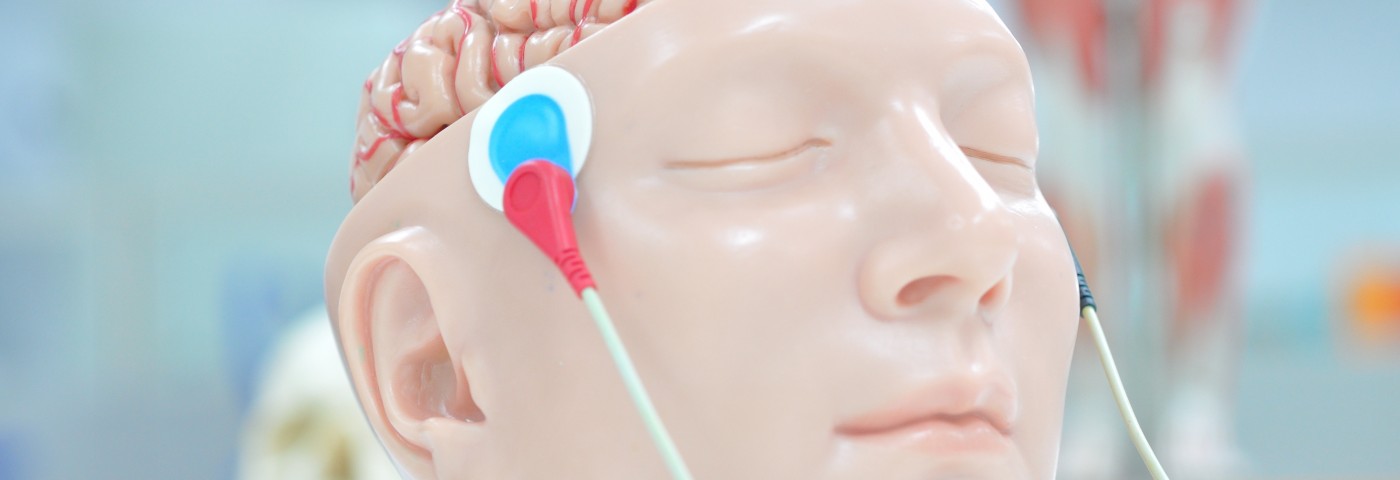Transcranial direct current stimulation (tDCS) can ease pain and fatigue, and improve quality of life as an add-on treatment for people with fibromyalgia who do not respond to common pain medications, a study suggested.
Based on these findings, which included better responses in people with more severe pain, its researchers recommend larger studies to investigate the mechanism of action and long-term benefits of tDCS in fibromyalgia patients.
The study, “Effects of add-on transcranial direct current stimulation on pain in Korean patients with fibromyalgia,” was published in the journal Scientific Reports.
Widespread pain, along with distress, fatigue, and sleep disturbances, are hallmarks of fibromyalgia. The disorder is thought to be associated with changes in pain and sensory processing in the central nervous system, which includes brain and spinal cord.
Noninvasive brain stimulation techniques such as tDCS may help with chronic pain conditions. Yet, a review of studies investigating tDCS suggested that the treatment leads to small, short-term reductions in pain that likely are not clinically significant.
An important limitation of prior research is that most studies had small numbers of participants, and short follow-up times. As such, the evidence related to tDCS remains insufficient.
Researchers at Chonnam National University Medical School in Korea investigated whether tDCS is effective as an add-on treatment for fibromyalgia patients who are unresponsive (refractory) to common pain medications.
They enrolled 46 participants (44 women), with a mean age of 47.4. Mean disease duration was 31.5 months (about 2.6 years).
Selected patients reported significant pain that did not respond to medication, and underwent an MRI brain scan within the past year. They continued with prescribed pain medication during the study period.
The six-week study included a one-week screening period, a one-week tDCS treatment phase, and four weeks of follow-up. All patients received tDCS treatment in five daily sessions for five consecutive days. Two electrodes were placed on the head by a physician, and a constant, low-intensity current was applied for 20 minutes.
As no control group was used and all patients were aware of the treatment, the researchers informed them the study would test a brain stimulation technique, but did not mention tDCS specifically.
Pain was assessed using a Visual Analogue Scale (VAS), ranging from 0, which is the complete absence of pain, to 10, corresponding to the worst imaginable pain. The primary goal was a change in pain VAS score from baseline (day 0) to day 13, one week after treatment. The average baseline pain VAS score was 8.78.
Additional parameters included the Fibromyalgia Impact Questionnaire (FIQ), brief pain inventory (BPI), Beck Depression Inventory, brief fatigue inventory, state-trait anxiety inventory, and the medical outcomes study sleep scale. These measures were assessed at baseline (study’s start) and on days six, 13, and 36, one month after treatment.
All the patients finished all five sessions of tDCS.
One day after treatment (day six), the VAS score had significantly decreased by a mean of nearly 2.2 points from baseline, which was maintained on days 13 and 36. FIQ scores, which measure quality of life issues like physical functioning, fatigue and anxiety, were also lower on day 13, but such changes were not maintained at day 36.
BPI scores showed a significant improvement, indicating lesser pain, throughout follow-up. Reductions in reported depression and fatigue were also seen on day six, but fatigue scores did not hold up through day 36. An easing in reported depression, however, continued through follow-up.
No significant improvements in anxiety or sleep were seen throughout the study.
A subsequent analysis divided patients according to median VAS pain scores. Those with scores higher than 8 showed the most significant decreases in pain on day six (2.74 points) and 13 (3.48), compared with patients whose baseline scores were lower. However, no significant difference was found on day 36.
Patients with VAS scores greater than 8 also showed a greater decrease in fatigue on day 6 compared with those with lower VAS scores. No differences were seen in the other measures comparing these two groups.
Adverse events were reported by eight participants, which included mild dizziness, light headache, and disturbed sleep. No one dropped out of the study, and no serious adverse events were reported.
“We showed that tDCS has beneficial effects on pain, quality of life, and fatigue in refractory FM [fibromyalgia] patients,” the scientists wrote. “Particularly, tDCS is effective at relieving pain severity in patients with severe pain. Our findings support the use of tDCS as a promising treatment in FM patients.”
Still, “larger, well-designed, unbiased investigations of tDCS treatment are required to explore the mechanism of action, as well as the long-term risks and benefits, and to confirm our results in FM patients,” they added.

